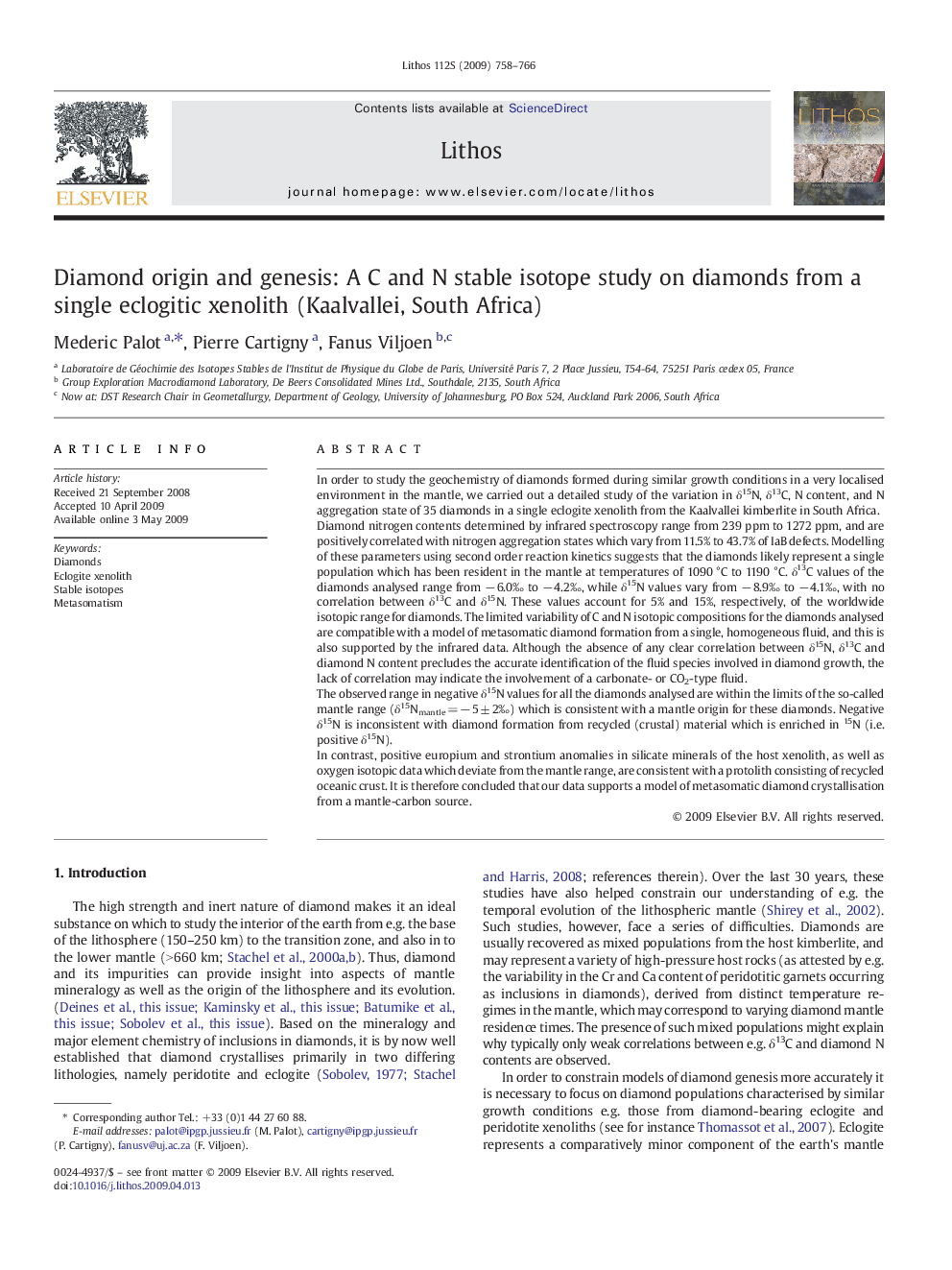| Article ID | Journal | Published Year | Pages | File Type |
|---|---|---|---|---|
| 4717187 | Lithos | 2009 | 9 Pages |
In order to study the geochemistry of diamonds formed during similar growth conditions in a very localised environment in the mantle, we carried out a detailed study of the variation in δ15N, δ13C, N content, and N aggregation state of 35 diamonds in a single eclogite xenolith from the Kaalvallei kimberlite in South Africa.Diamond nitrogen contents determined by infrared spectroscopy range from 239 ppm to 1272 ppm, and are positively correlated with nitrogen aggregation states which vary from 11.5% to 43.7% of IaB defects. Modelling of these parameters using second order reaction kinetics suggests that the diamonds likely represent a single population which has been resident in the mantle at temperatures of 1090 °C to 1190 °C. δ13C values of the diamonds analysed range from − 6.0‰ to − 4.2‰, while δ15N values vary from − 8.9‰ to − 4.1‰, with no correlation between δ13C and δ15N. These values account for 5% and 15%, respectively, of the worldwide isotopic range for diamonds. The limited variability of C and N isotopic compositions for the diamonds analysed are compatible with a model of metasomatic diamond formation from a single, homogeneous fluid, and this is also supported by the infrared data. Although the absence of any clear correlation between δ15N, δ13C and diamond N content precludes the accurate identification of the fluid species involved in diamond growth, the lack of correlation may indicate the involvement of a carbonate- or CO2-type fluid.The observed range in negative δ15N values for all the diamonds analysed are within the limits of the so-called mantle range (δ15Nmantle = − 5 ± 2‰) which is consistent with a mantle origin for these diamonds. Negative δ15N is inconsistent with diamond formation from recycled (crustal) material which is enriched in 15N (i.e. positive δ15N).In contrast, positive europium and strontium anomalies in silicate minerals of the host xenolith, as well as oxygen isotopic data which deviate from the mantle range, are consistent with a protolith consisting of recycled oceanic crust. It is therefore concluded that our data supports a model of metasomatic diamond crystallisation from a mantle-carbon source.
